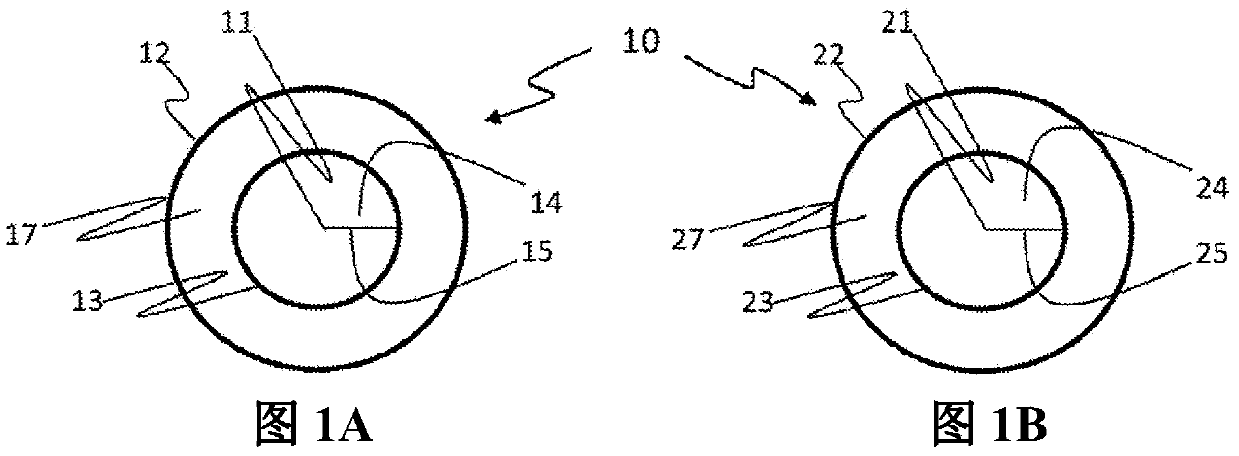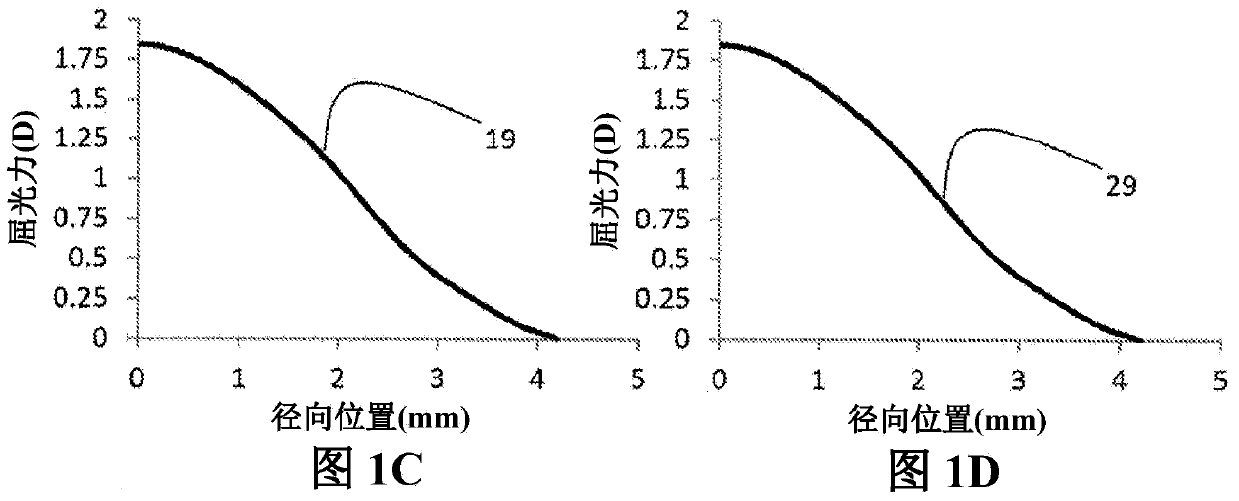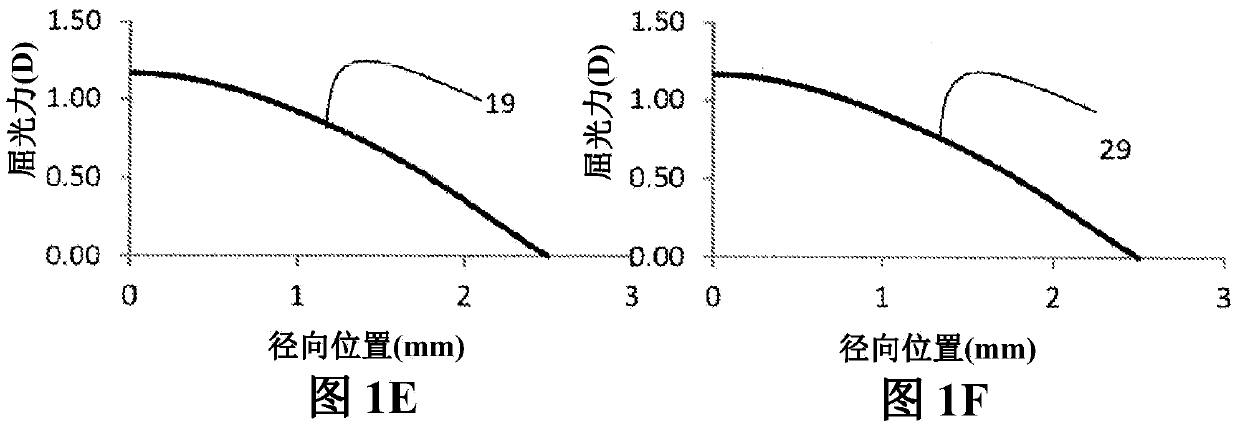Multifocal contact lenses and related methods and uses to improve vision of presbyopic subjects
A contact lens, multi-focus technology, used in glasses/goggles, optical components, instruments, etc., to solve problems such as increased inventory
- Summary
- Abstract
- Description
- Claims
- Application Information
AI Technical Summary
Problems solved by technology
Method used
Image
Examples
example 1
[0147] Manufacturing of multifocal contact lenses
[0148] as above and as Figures 1A-1F Multifocal contact lenses with aspheric power profiles illustrated in are produced using a static cast molding process.
[0149] The metal insert is machined to form an optical quality surface corresponding to that of a multifocal contact lens. A nominal or target or predetermined aspheric power profile is used to form the aspheric power profile within the Optic Zone portion of the optical quality surface of the Insert. Examples of nominal aspheric power distributions are illustrated in the Figure 1C-1F middle.
[0150] The inserts are placed in an injection molding machine to form a contact lens mold cavity when the inserts are placed close to each other. Contact lens mold material (eg, particles of polystyrene, polypropylene, vinyl alcohol polymers, etc.) is melted and injected into the contact lens mold cavity to form female and male contact lens mold members. The female contact...
example 2
[0157] Visual Acuity - Moderate Add Light Individuals
[0158] Select a group of presbyopes who require a plus power correction of +1.25D to +1.75D (as determined by the ophthalmologist ECP; individual has a plus plus power prescription of +1.25D, +1.50D, or +1.75D) for use as described above and as Figures 1A-1F The multifocal contact lens fitting of the present invention is illustrated in FIG. So fitted multifocal contact lenses have an add power within the central 5 mm diameter (2.5 mm radial distance) of the optical zone of from about 1.00 D to less than 1.25 D, eg, about 1.15 D.
[0159] The ECP determines each individual's eye dominance, distance vision power correction, and down-add power needs. Optimal or complete correction of distance vision in the dominant eye with the first multifocal contact lens of the present invention (eg, the distance vision refractive power of the first multifocal contact lens corresponds to the distance vision prescription for the domina...
example 3
[0167] Visual Acuity - Highly Added Light Individuals
[0168] Select a group requiring an add power correction of +2.00D or greater (as determined by the ophthalmologist ECP; individuals with +2.00D, +2.25D, +2.50D, +2.75D, or +3.00D Refractive power prescription) for presbyopia as described above and as Figures 1A-1F The multifocal contact lens fitting of the present invention is illustrated in FIG. So fitted multifocal contact lenses have an add power within the central 5 mm diameter of the optical zone of from about 1.00 D to less than 1.25 D, eg, about 1.15 D. These lenses had the same design or the same power distribution as the Lens A lens described in Example 2.
[0169] This highly under-addition individual group is suitable for either the Lens A lens or the Lens B lens, as described in Example 2. The main difference between Example 2 and Example 3 is that the individual of Example 3 required a higher additive power correction as determined by the ECP.
[0170] ...
PUM
 Login to View More
Login to View More Abstract
Description
Claims
Application Information
 Login to View More
Login to View More - R&D
- Intellectual Property
- Life Sciences
- Materials
- Tech Scout
- Unparalleled Data Quality
- Higher Quality Content
- 60% Fewer Hallucinations
Browse by: Latest US Patents, China's latest patents, Technical Efficacy Thesaurus, Application Domain, Technology Topic, Popular Technical Reports.
© 2025 PatSnap. All rights reserved.Legal|Privacy policy|Modern Slavery Act Transparency Statement|Sitemap|About US| Contact US: help@patsnap.com



